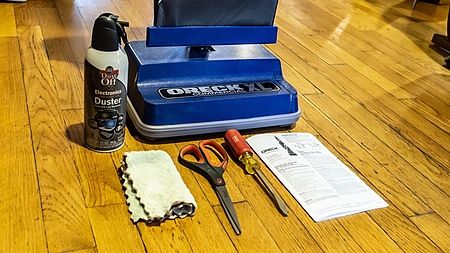When was the last time you cleaned your vacuum cleaner? Just like your sink and shower, failure to clean your vacuum can cause it to become a source of malodor and impact its performance. It might sound like a big job, but it’s quite simple if you come prepared.
What you’ll need:
- A copy of the owner’s manual
- A screwdriver
- Dusting cloth
- Trash bag
- Scissors
- Compressed Air or soft-bristled brush
- Replacement filters and/or dust bags
- Dust mask (Optional)
How to Clean a Vacuum Cleaner: Step by Step
Step 1: Consult the manual
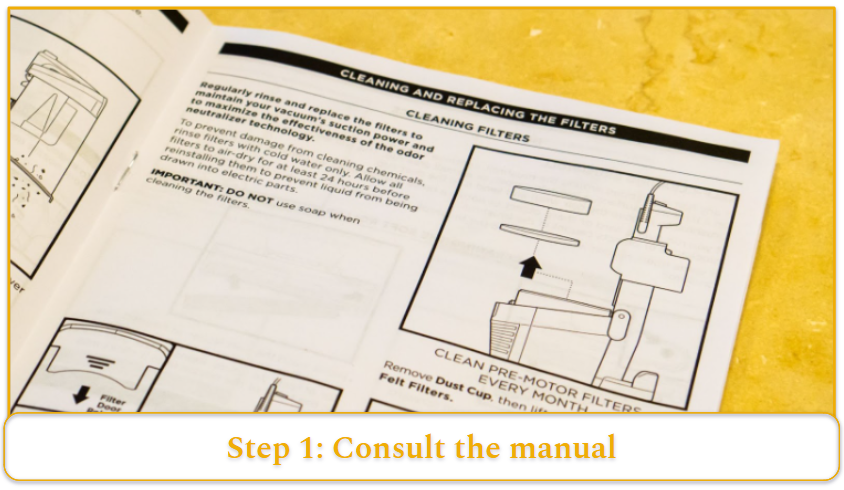
- If you lost your manual or threw it away, don’t worry! Most manufacturers post the manuals online.
- You want to check the manual because it contains tidbits on how to correctly disassemble the brush head, empty the bin, access the filters, and what parts can and cannot be washed with water.
Step 2: Unplug the vacuum and move it to an open space
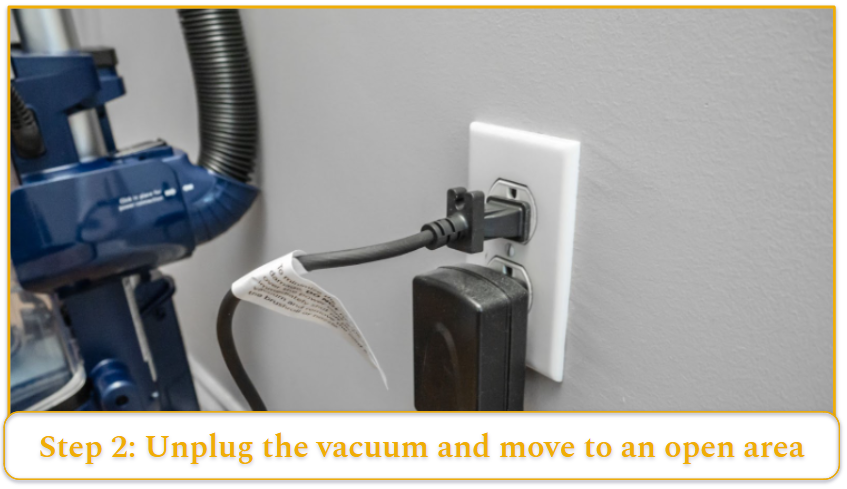
Always unplug your vacuum before doing any work on it
- Unplug your vacuum cleaner — safety first! It might sound obvious, but you should avoid touching the inside of the vacuum while it’s plugged in or else you might get a nasty shock.
- This is a good time to put on a dust mask, especially if you have sensitive sinuses or are allergic to pollen, dust, pet dandruff or dust mites (or if you just don’t want to breathe in dusty air).
Step 3: Clean the exterior
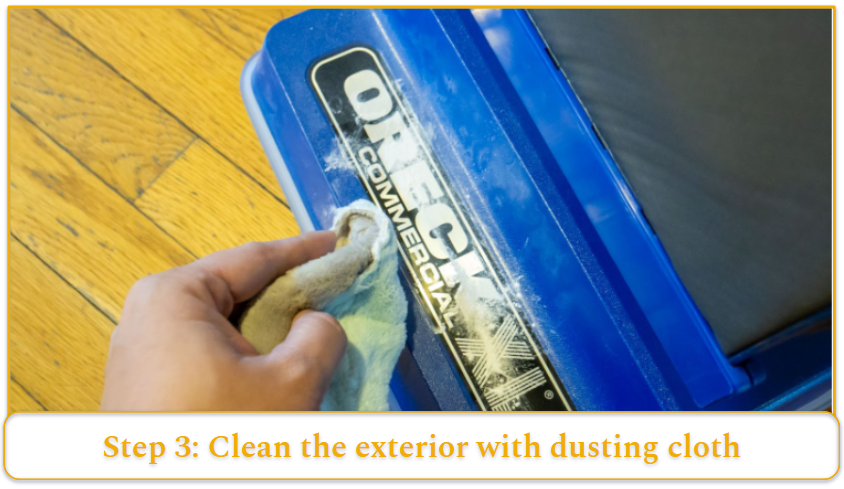
For vacuums, you should clean from the top to bottom and outside in
- Wipe the exterior of your vacuum with a dusting cloth. Vacuums produce static when they clean carpets, so dust will stick to every ridge and crevice.
- For hard-to-reach areas, use compressed air or a paintbrush.
Step 4: Remove and replace the bag
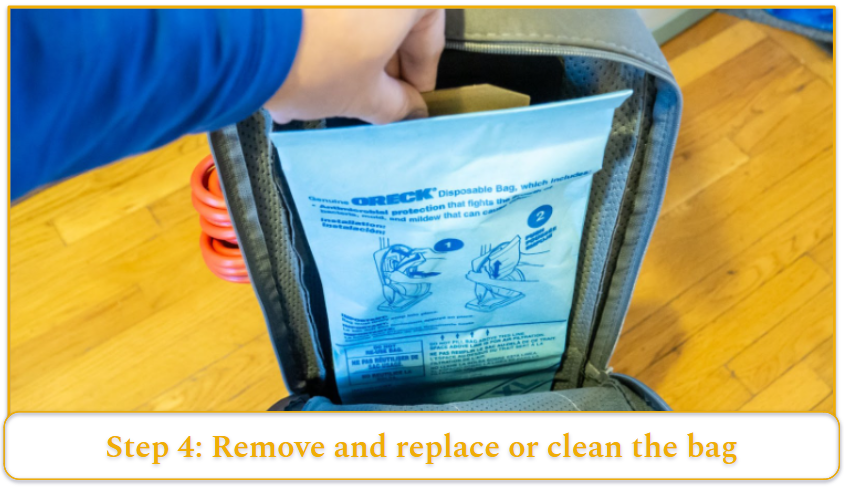
More often than not, the source of bad odors on a vacuum come from the bag
- Remove the vacuum bag.
- Place a hand at the bottom of the bag while removing it. Dust and debris are heavy en masse and the bag can get brittle if it’s old, so it could spill.
- Place the used vacuum bag in its own trash bag. Some vacuum bags self-seal but a lot of dust can escape if it’s suddenly dropped.
- Put the new bag into the vacuum cleaner. Make sure it’s properly attached.
If your vacuum has a reusable bag and yours has been replaced recently, you should clean it instead. Reusable vacuum cleaner bags can usually last up to a year with regular cleaning. Here’s how to do it:
- Remove and empty the bag. Tap it gently to dislodge any stubborn debris. If it’s really dusty, take it outside and shake a few times to get rid of dust.
- If your bag is washable (check your manual for this information), put it in warm, soapy water. Make sure to use a mild detergent to avoid damage.
- Scrub it gently with a soft brush.
- Rinse thoroughly with warm water.
- Allow it to dry completely before using again. I usually dab it a bit with a paper towel to pick up excess water and then hang it in a well-ventilated place that gets lots of sunlight.
Once your bag is clean and dry, it’s a good time to check for signs of damage. If you notice any, replace the bag with a new one. Also, if you do all of this but your bag still smells bad when you use it, it might be time to replace it.
Step 5: Check and clean the brush head
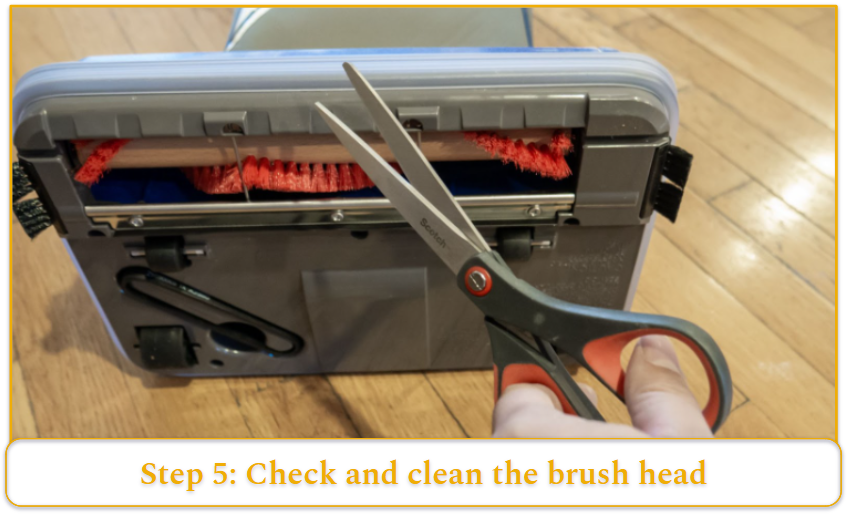
A pair of scissors can solve the problem of hair wrapped around a brush
- Remove hair wrapped around the brushes. Using scissors makes it easier.
- If the hair is too tightly wound or there’s something else jamming up your brush head, you’ll need to disassemble the head.
- To do this, follow the instructions in the manual. In my experience, you won’t need anything more than a flathead screwdriver.
- Check if the brushes can be cleaned with water. If yes, then washing them in warm, soapy water (with a mild detergent) and allowing them to dry completely should suffice.
Step 6: Remove and replace/clean the filters
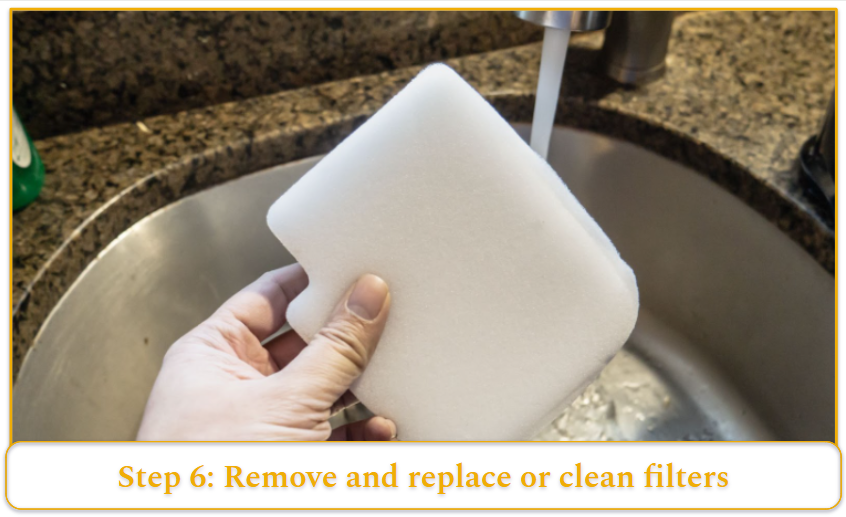
Some filters can be cleaned under running water
- Depending on your vacuum cleaner, you may have multiple filters. Most vacuums have at least two.
- Clean mesh filters with a dusting cloth. If there’s any stubborn dust, use compressed air.
- Clean foam filters by rinsing them in the sink. Warm water only should work, but if there’s a lot of debris, use a mild detergent too. Allow to dry completely before putting them back in.
- HEPA filters can’t be cleaned normally, so you’ll need to replace them. I recommend doing this every three to six months to avoid bad odors and allergen buildup.
How to Clean a Bagless Vacuum Cleaner
- Follow all the steps above, except step 4.
- Instead of replacing the bag, you need to clean the dust bin or cup. Your manual should have instructions on how to do this. In most cases, you can wipe the bin with a wet cloth and clean trickier parts with compressed air.
- If it’s really dirty, I recommend washing it with warm soapy water and a soft sponge.
- Allow to dry completely before putting it back in the vacuum cleaner. I usually wipe it with a paper towel and then place it upside down on a dry cloth so it dries fully.
How to Clean a Robotic Vacuum Cleaner
- Follow all the steps above.
- Clean the exterior. Be sure to pay special attention to the underside of the robot vacuum. The underside of a robot vacuum has sensors that keep it from falling down stairs.
- Clean the charging dock. Wiping it down on the outside and the inside should be enough.
How to Clean a Vacuum Cleaner Filter
Full-sized vacuum cleaners tend to have multiple layers of filtration. They often have a fine medium filter like a HEPA in addition to a mesh or foam one.
While there are washable HEPA filters, it’s rare to see one in a vacuum cleaner so your washing efforts are going to focus on the pre-filters. Mesh filters can be cleared out with a microfiber cloth and a bit of compressed air and the foam filters can usually be rinsed out under a faucet.
If the pre-filters still have some odor to them, soaking them in some warm water and soap should do the trick.
How to Clean Vacuum Cleaner Attachments
You can clean dusting brushes and crevice tools by wiping them down and shaking them out. If there are tufts of hair stuck inside them, you can use compressed air or pipe cleaners to clear them out.
Mini powered brushes can sometimes be taken apart like the main brush head and cleaned the same way.


